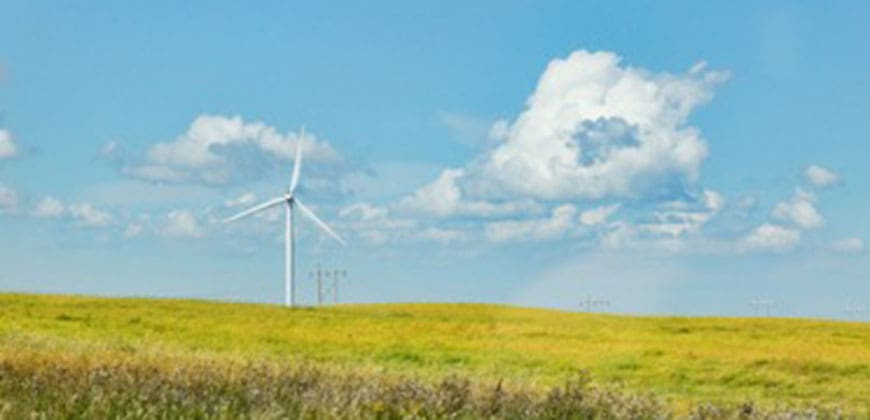Bringing Wind Power up to Speed
Eric Cheng — Clean Energy Engineering Capstone Project
Student project finds ways to remove limits from one of Canada’s most valuable energy sources

Spend any time on Canada’s highways these days and you’ll likely pass what look like the fin bones of some monolithic whale strapped to double length semi-trailers: wind turbine blades. They’re astonishing feats of engineering that redefine the term “oversize load” and they send a very visible cue: renewable energy is coming.
As his Clean Energy Engineering Capstone Project for completion of the Master of Engineering Leadership (MEL) degree, student Eric Cheng partnered with Midgard Consulting to find ways to evaluate the requirement and ways, to firm wind power.
Cheng was given a very clear problem. “Renewable energy has always had one major issue: it’s intermittent,” he explains. “This was a study to investigate intermittence issues with wind — it gives a practical approach to dealing with the problem.”
Unlike fossil fuels, there’s no end to the amount of wind power available. Coal and natural gas — the dominant power sources in much of Canada — are finite. Wind power is limitless, but it’s unpredictable and no two sites are the same. “You can’t just find a winning formula and replicate it,” explains Cheng. “You need to be able to mould your approach so that it’s dynamic, and so that all sites complement one another rather than just mirror each other.”

By analyzing the minimum capacity at a series of wind facilities, identifying barriers of further wind penetration and looking at how firming assets — like energy storage — can address the problem of unpredictable energy flow, Cheng made recommendations for future project and operation planning.
Guidance from Midgard — a kick-off meeting and plenty of back and forth discussion — equipped Cheng to tackle the problem creatively, on his own terms. “[The industry partner] isn’t holding your hand along the way, you have to do it all yourself. It provides the opportunity for professionals to really develop themselves,” Cheng emphasizes. “You can try everything we learn in this program and apply it.”
For Cheng, the partnership was a refreshing reflection of the professional world. “As an undergrad you’re more like a computer — I was once a computer,” he laughs. “You’re told what to do, you’re given instructions, you’re afraid to do anything without parameters. But instead this program gave us the tools and, through discussion in class, pushed us to try new things and innovate.”
Tackling relevant, real life problems in a real life situation is invaluable — it’s an evolution of learning, taking the student out of the classroom and into the workplace, with the help of leading industry partners. Cheng and Midgard benefit from it. Working alongside Midgard, Cheng was able to thoroughly analyze an existing wind setup and work creatively to harness the full potential of wind power.
Cheng concluded that improving dependability for wind facilities would call for diversification — both spatially and technologically. His recommendations included conducting spatial variation of the facilities by longitude so that the wind trends of each site would complement one another, using Direct Drive Wind Turbines to stabilize wind power at P90 wind speeds, and that any energy storage assets used should have a high power density and a low energy density.
And the outcome for Cheng? It could play a pivotal role in achieving his goal to work for a big Canadian utility in the prairies. “It definitely is a piece I can bring to utilities or to anyone if I wanted a job. It’s a piece of work I can showcase as part of my portfolio — it’s the experience that counts. I can talk about wind technology a lot more, and I believe that will be very valuable in an interview.”
Application Deadlines
The online application portal for the January 2025 has closed.
Get ready to apply!
Admissions for the 2026 intake will open on January 1, 2025.
How to ApplyClean Energy Engineering
Develop the technical, business and leadership skills needed to generate sustainable energy solutions.
Read More


